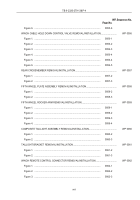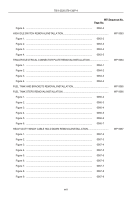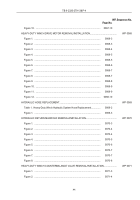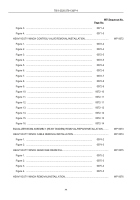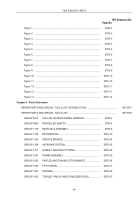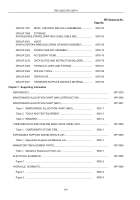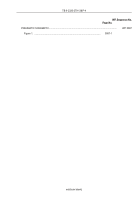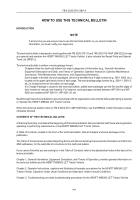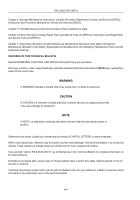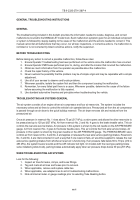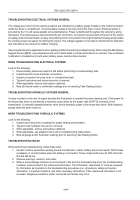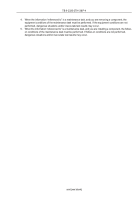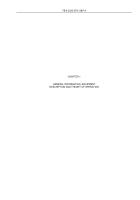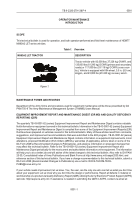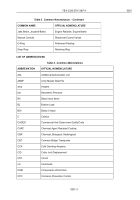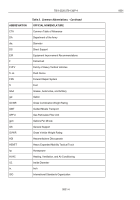TB-9-2320-279-13-P-4 - Page 43 of 744
GENERAL TROUBLESHOOTING INSTRUCTIONS
GENERAL
The troubleshooting included in this bulletin provides the information needed to isolate, diagnose, and correct
malfunctions incurred to the M982A2 LET model truck. Each malfunction symptom given for an individual component
or system is followed by step(s) leading to the cause of the malfunction and the actions needed to correct it. This
manual cannot list all malfunctions that may occur, nor all test, inspections, or corrective actions. If a malfunction is
not listed or is not corrected by listed corrective actions, notify the supervisor.
BEFORE TROUBLESHOOTING
Before taking any action to correct a possible malfunction, follow these rules:
1. Ensure Operator Troubleshooting has been performed on the vehicle since the malfunction has occurred.
2. Ensure Operator PMCS was performed prior to, during, and after the mission that incurred the malfunction.
3. Obtain as much information from the operator as possible about the malfunction.
4. Check the repair history of the vehicle.
5. Never overlook the possibility that the problem may be of simple origin and may be repairable with a simple
adjustment.
6. Use all of your senses to observe and locate problems.
7. Whenever possible, isolate the system first and then the component causing the malfunction.
8. Remember, for every failed part there is a cause. Whenever possible, determine the cause of the failure
before assuming the malfunction is fully repaired.
9. Use standard automotive theories and principles when troubleshooting the vehicle.
TROUBLESHOOTING AIR SYSTEMS GENERAL
The air system consists of an engine driven air compressor and four air reservoirs. The system includes the
necessary valves and air lines to control the vehicle's air operated devices. Pressurized air from the air compressor
is passed through an air dryer to the quick buildup reservoir. The air dryer removes dirt and moisture from the
pressurized air.
Once air pressure in reservoir No. 1 rises above 75 psi (517 kPa), a valve opens and allows the other reservoirs to
be pressurized up to 120 psi (827 kPa). Air from reservoir No. 2 and No. 4 goes to the brake treadle valve. This air
controls the rear axle service brakes. Air pressure in this system is shown by the red needle on the AIR PRESSURE
gauge. Air from reservoir No. 3 goes to the brake treadle valve. This air controls the front axle service brakes. Air
pressure in this system is shown by the green needle on the AIR PRESSURE gauge. The PARKING BRAKE valve
controls air from reservoir No. 3 and No. 4 and applies or releases the rear axle service (parking) brakes. Reservoirs
No. 3 and No. 4 are interconnected in such a way that if one reservoir fails, air would be supplied to release the rear
axle service (parking) brakes from whichever reservoir is functioning. If air pressure falls below 60 to 70 psi (414 to
483 kPa), the system buzzer sounds and the AIR indicator will light. On models with the new type parking brake
valve installed (yellow knob), parking brakes automatically apply when air pressure drops below 30 psi (207 kPa).
WHEN TROUBLESHOOTING AIR SYSTEMS
Look for the following:
1. Inspect air lines for leaks, crimps, and loose fittings.
2. Tag and mark all air lines and hoses prior to removal.
3. When applicable, remove and replace cable ties.
4. When applicable, use adapter lines to aid in troubleshooting malfunctions.
5. Note all internal meter or gauge readings prior to selecting Take Reading button.
TB 9-2320-279-13&P-4
xxvii
Back to Top

